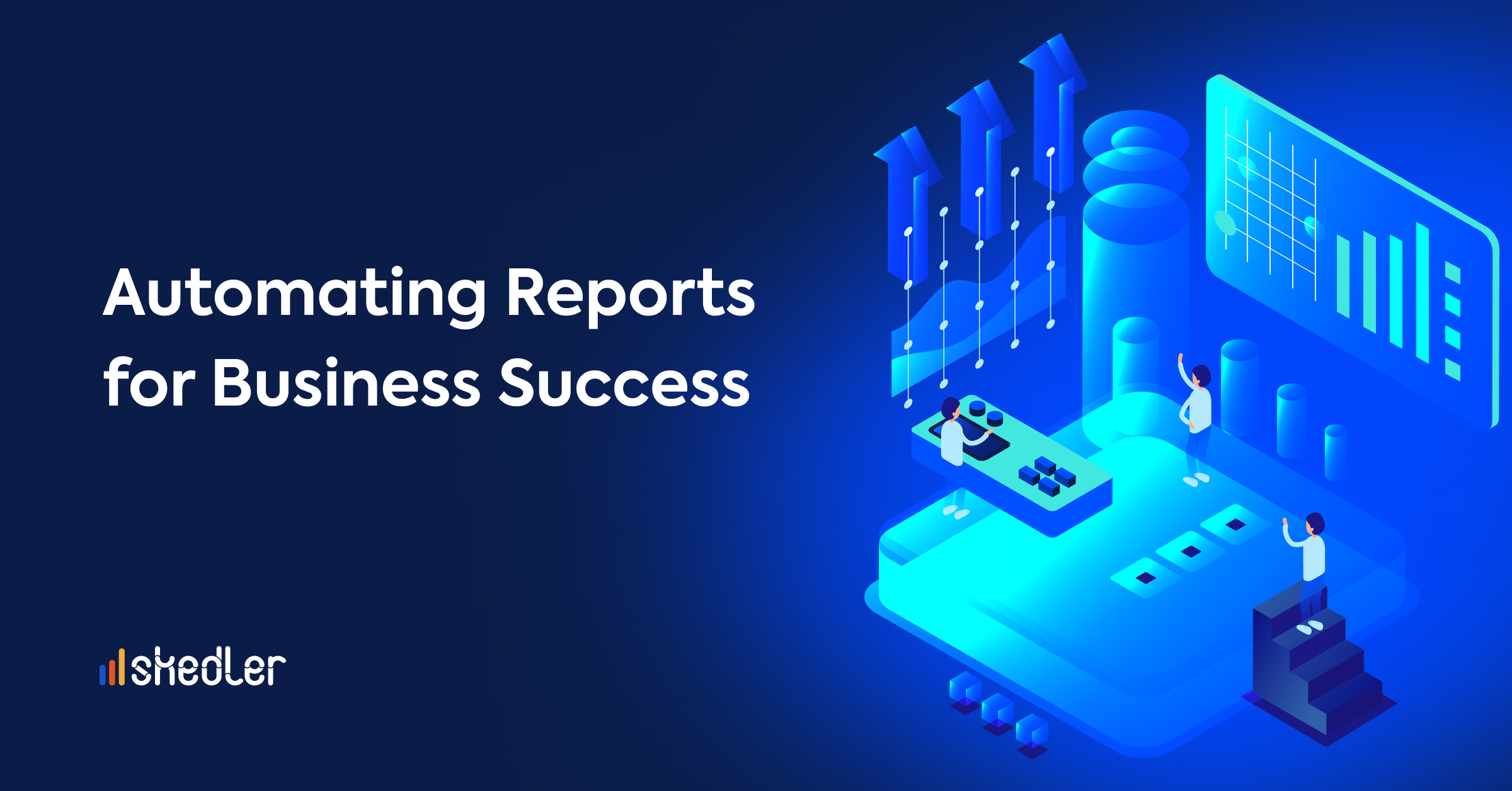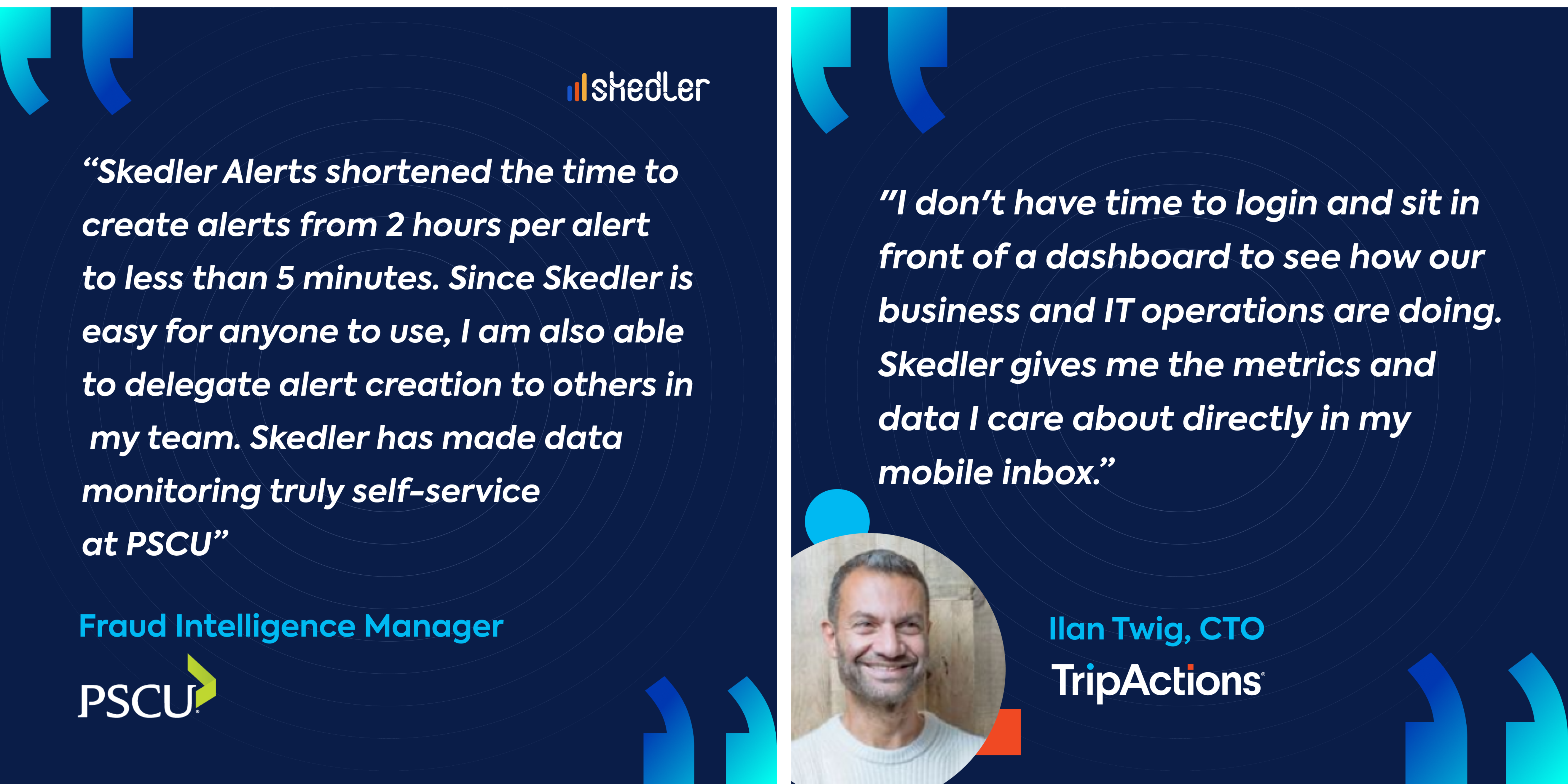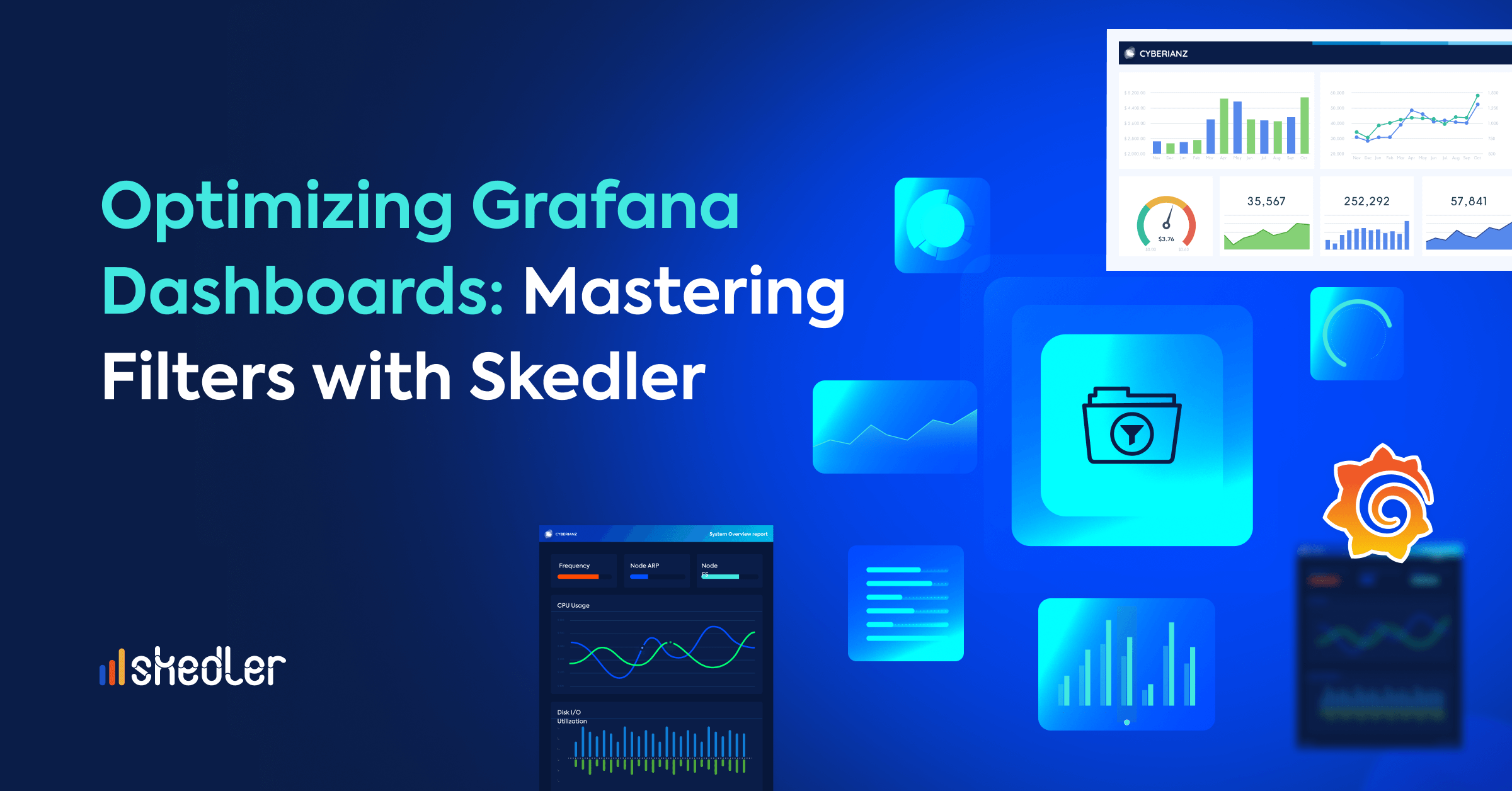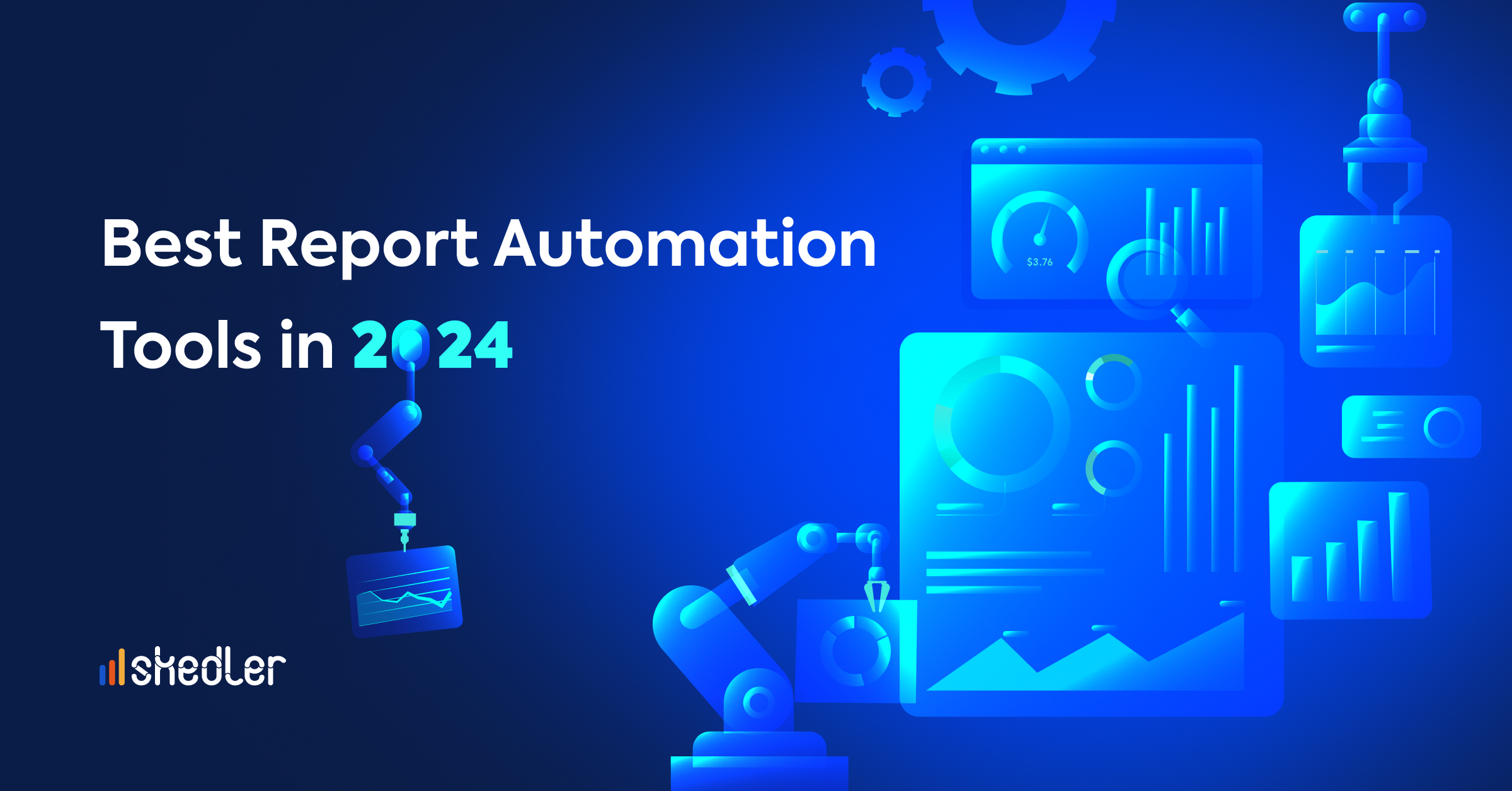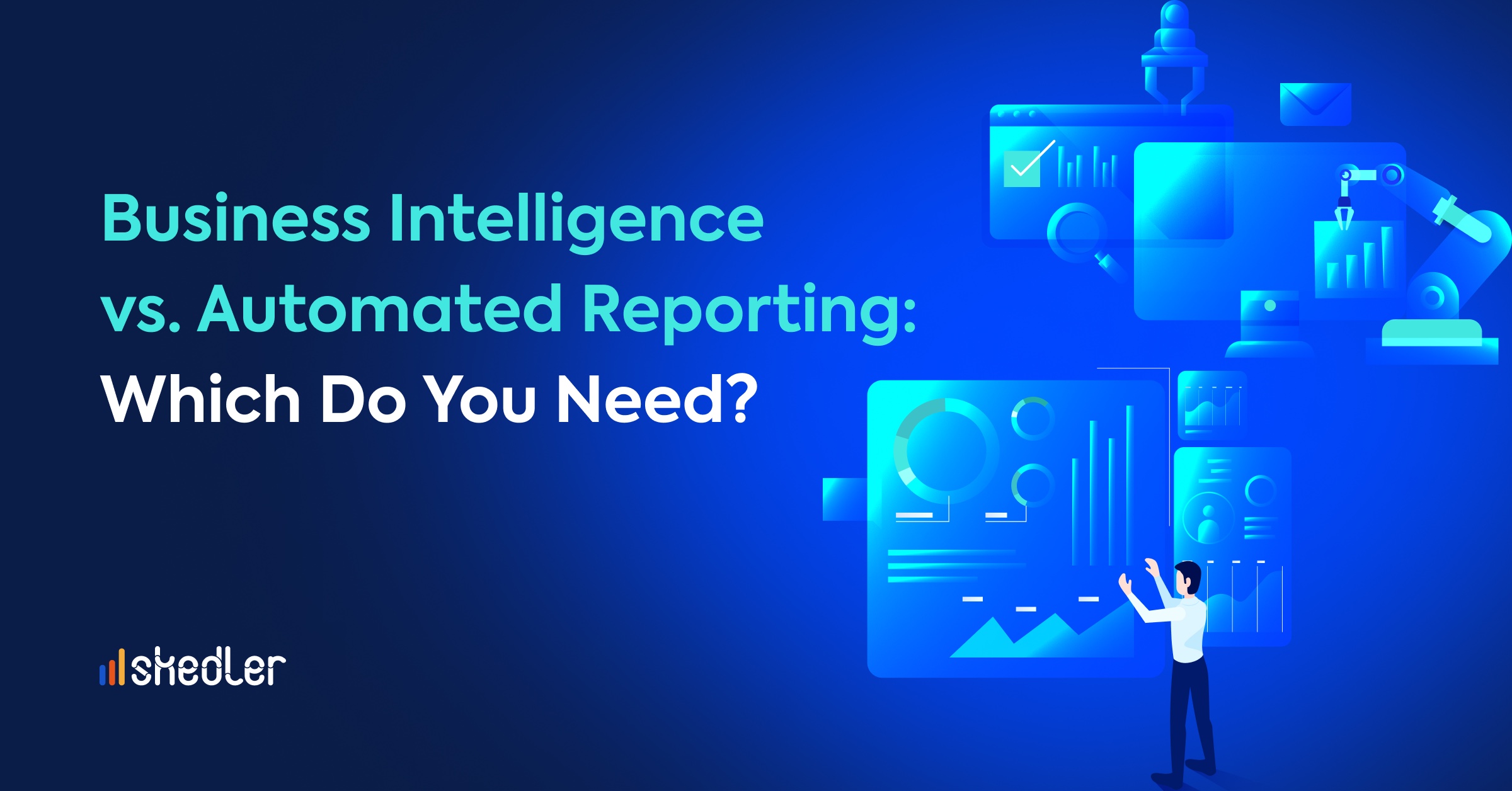Automating Reports for Business Success in 2024
Importance of Reporting in Business
Why automating reports is key to success? As companies evolve in an era of advancing technology, so does their complexity. While this technological progress offers numerous benefits, it can sometimes bring challenges when the available tools and resources are not effectively leveraged. In this landscape, the key to transparent and efficient business operations is understanding the importance of automated reporting and how to leverage it.
(Source: Shridhar Gupta / unsplash)
Modern technology enables companies to operate more transparently and efficiently than ever before. However, it is really crucial to understand the potential of this technology and make the most of it. For this reason, effective business management relies on solid reporting.
Here are the key reasons why reporting is essential for successful teams and companies:
- Provision of Insightful Analysis: The reports help to identify areas that need improvement, key business areas that require further attention and to effectively track all relevant aspects of the business.
- Enhanced Transparency: Rather than relying on assumptions or unproven ideas to make decisions, reports promote transparency, offering a clear understanding of ongoing events.
- Informed Decision-Making: In the world of business, significant decisions are made almost daily. Business reporting streamlines this process by providing data-driven insights, making informed and superior decision-making more accessible.
- Improved Communication: When everyone has access to the same information, communication improves. This results in substantial benefits for any team and organization.
- Early Identification of Potential Issues: Reporting helps maintain control and enables continuous data review. This allows early detection and resolution of potential problems.
In the following sections, we will delve into the tools and best practices that allow companies to automate their reporting processes.
Manual Reporting: A Barrier to Business Efficiency
Manual reporting not only consumes a significant amount of time that could be allocated to more relevant tasks but is also inefficient and error-prone. In an environment where time is critical, the inefficient nature of manual reporting becomes a significant obstacle to operational excellence. Furthermore, manual processes are notoriously error-prone, with the potential for inaccuracies in data entry and report presentation, leading to costly mistakes.
Moreover, manual reports often lack consistency. Each employee responsible for generating reports may have his or her own methods and formats. This creates confusion and hinders communication within the organization. Inconsistency makes it challenging to derive meaningful insights from the data and can impede collaboration between teams. While highlighting the superiority of report automation, we realize the many disadvantages associated with manual reporting.
Embracing Automation in Modern Enterprises
In an era characterized by the relentless pace of technological advancement, the need for automation has become increasingly evident. For companies to remain competitive and agile in the current landscape, adopting automation is not merely a choice but a necessity. Automation serves as the linchpin that streamlines processes, enhances operational efficiency, and unveils new avenues for growth and innovation.
One of the primary drivers of the need for automation is the ever-escalating volume of data. Data forms the lifeblood of contemporary enterprises. Without automation, managing and extracting information from these large amounts of data becomes a laborious, time-consuming task. By automating reporting tasks, companies can not only save precious time but also harness the power of data to make informed decisions and achieve greater success.
Automation is not just a choice; it’s a vital instrument that empowers businesses to thrive in a data-driven, technology-rich world, propelling them toward excellence in an ever-evolving business landscape.
Benefits of Automating Reports
It’s clear that automating reports brings significant benefits to companies. In a nutshell, here are the advantages of report automation:
- Time and Resource Savings
- Improved Accuracy and Consistency
- Enhanced Decision-Making
- Scalability and Growth
- Proactive Issue Resolution
- Resource Optimization
- Regulatory Compliance
- Collaboration and Transparency
In this article, we are discussing the benefits of automating reports. Skedler has developed a tool for DevOps teams working with tools like Grafana or Kibana, enabling them to automate their reports. Check out this article where we delve into how Skedler enhances efficiency and productivity through automated reporting.
Tools for Automating Reports
Introduction to Reporting Automation Tools
In today’s data-driven business landscape timely and accurate reporting is essential for informed decision-making. As we mentioned above, manual reporting is time-consuming and error-prone. This is where reporting automation tools, such as Skedler, ReportGuru, and DataFlowPro, come into play, revolutionizing the way businesses create and share reports consistently. These tools have gained recognition in the field, offering innovative solutions to the challenges of report generation.
We will now delve into the world of reporting automation tools, with a particular focus on Skedler, the tool we have created for DevOps teams. We will explore its numerous advantages and highlight its real-world impact through case studies.
Skedler: An Overview
Skedler is a powerful reporting automation tool specially designed for DevOps teams and businesses that rely on data from various sources like Elasticsearch Kibana and Grafana. It simplifies the entire process, from extracting data to scheduling and distributing reports to end-users, or even hosting them on web apps and portals.
Whether you’re dealing with system data, performance metrics, or any other type of data, Skedler can help you transform raw data into meaningful insights. It offers a user-friendly interface and is compatible with popular observability platforms like Elasticsearch Kibana, Grafana, and more.
Skedler boasts a range of features that make it a top choice for businesses looking to automate their reporting processes. Here are top 3 of them:
- Custom Report Templates: Skedler empowers users to create custom report templates, ensuring consistent formatting and branding across all reports.
- Scheduling and Distribution: With Skedler, you can schedule report generation and distribution at specific intervals, ensuring that stakeholders receive reports precisely when needed.
- Real-Time Reporting: Skedler excels at generating real-time reports, a critical feature for businesses that require up-to-the-minute insights.
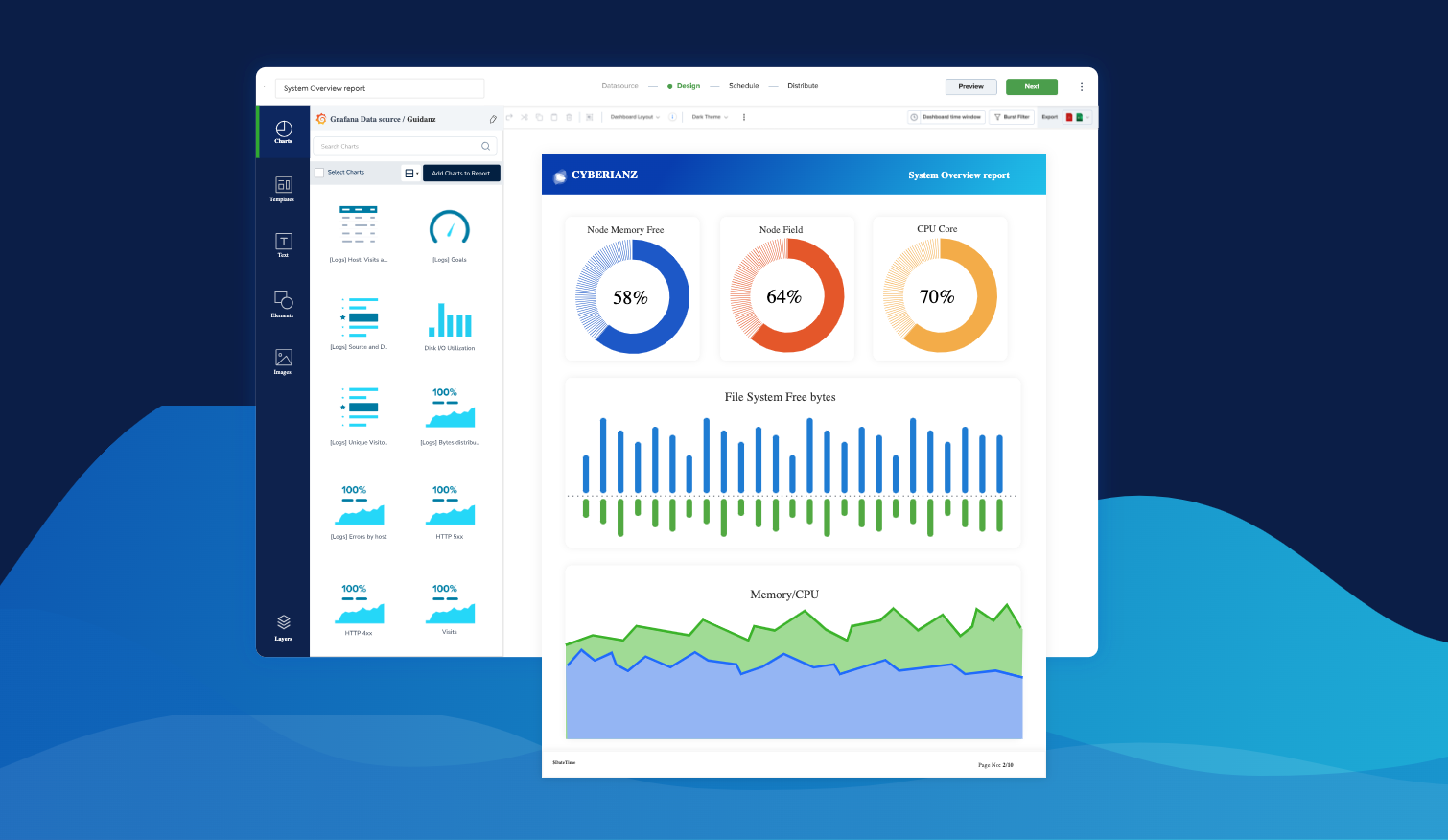
How Skedler Streamlines Report Generation
Using Skedler is straightforward and efficient. Here’s how it streamlines report generation:
- Connect Data Sources: Begin by connecting Skedler to your data sources, and you’re ready to go 🏁
- Create Custom Report Templates: Design report templates to your exact specifications using the interactive Skedler Report Designer, ensuring that reports adhere to your branding and formatting requirements.
- Design and Schedule Reports: Design reports using interactive Skedler Report Designer and Set up automated report schedules based on your preferences. Skedler can generate reports hourly, daily, weekly,monthly or yearly.
Skedler allows you to schedule your reports according to your preferences.
- Distribute Reports: Once the reports are generated, Skedler automatically distributes them to the relevant stakeholders via email, Slack, or you can even host reports on your web app or portal via AWS S3 bucket.
Case Studies: Successful Implementation of Skedler
To underscore the practical benefits of Skedler and similar reporting automation tools, let’s explore case studies that demonstrate their impact in diverse business scenarios:
For example, a leading software company from United States implemented Skedler to automate the creation and distribution of performance reports. This reduced report generation time by 60%, allowing the team to dedicate more resources to optimizing software performance, resulting in a 15% improvement in customer satisfaction due to faster issue resolution.
A leading tech manufacturer implemented Skedler to automate their daily, weekly and monthly system overview and health check reports. This strategic move led to a remarkable 75% reduction in report generation time, empowering their team to concentrate on forward-thinking strategic planning and innovation.
Some of the noteworthy organizations that rely on Skedler include industry giants such as Robert Bosch AG, Orange Group, Hewlett Packard Enterprises, Windstream, Airbus, Siemens, and many others.
Skedler’s impact on these businesses extends beyond streamlining report generation processes; it has translated into tangible improvements in efficiency and productivity. Here are a couple of testimonials from companies that use Skedler who have witnessed remarkable transformations in their data reporting and monitoring:
“Skedler Alerts has been a game-changer at PSCU and has made data monitoring truly self-service for us. Skedler helped us reduce our alert creation time from 2 hours to less than 5 minutes. In addition, because of its ease of use, I can now delegate the creation of alerts to other members of my team,” shared the Fraud Intelligence Manager at PSCU.
“In my day-to-day life, I have little time to log on and sit in front of a dashboard to see how our business and IT operations are going. A reporting automation tool like Skedler gives me the metrics and data I care about right in my mobile inbox without the need to log in,” emphasized Ilan Twig, CTO of Tripactions.
Future Trends in Report Automation
AI and Machine Learning in Reporting
The use of AI and ML in reporting offers a multitude of advantages that will transform the reporting landscape. These benefits include:
- Autonomous Data Retrieval: AI and machine learning can autonomously extract data from various sources and platforms to complete reports automatically, significantly reducing the need for manual data retrieval and entry.
- Process Automation: The end-to-end report generation process, from data mapping to checks, reconciliations, and reviews, can be fully automated.
- Enhanced Report Accuracy: AI-based report generators can identify and correct errors, thereby improving the overall accuracy of reports. This technology acts as a safeguard against inaccuracies that human reviewers may overlook.
- Insight Generation: AI and ML report generators have the ability to uncover insights that are often impossible to obtain through traditional means. They can identify trends and patterns that may not be evident to the human eye, adding a layer of depth to report analysis.
- Simplified Regulatory Compliance: Machine-readable and executable regulations facilitate compliance by reducing the need for complex interpretations. This minimizes the risk of misinterpretations and contributes to the overall accuracy of reports in the face of evolving regulations.
- Improved Data Quality: Automated data quality checks, variance reasonability analysis, and validation checks enhance the quality of submitted reports. These automated processes ensure data consistency, accuracy, and compliance with required standards.
(Source: Annie Spratt / unsplash)
In summary, the incorporation of AI and ML in report automation enhances efficiency and enables teams and organizations to extract deeper insights from data, proactively address issues, and deliver more personalized and actionable reports. As a result, decision making and the overall system improves significantly. This trend is poised to become an indispensable asset for the future of report automation in DevOps and various industries.
An Example: Co-Pilot Integration in Power BI
To mention a particular example, we can talk about Co-Pilot and its integration with Power BI. This has been a groundbreaking change in data analytics may be the case of Co-Pilot Integration in Power BI.
Recently, Microsoft introduced Co-Pilot, an AI-based feature that not only helps Power BI developers improve their reports and dashboards, but can also generate them autonomously when needed. This marks a significant leap in data reporting, where Co-Pilot, much like ChatGPT, interprets the instructions and manages the entire reporting process. The result is a revolutionary approach that improves the creation and sharing of reports. This makes them more accessible and intuitive in a variety of professional settings.
Enhanced Data Visualization: Shaping Insights
Enhanced data visualization is set to revolutionize report generation by making data more accessible and insightful. Interactive dashboards and dynamic visual elements provide a quick and comprehensive view of complex information, aiding decision-makers in capturing critical insights at a glance.
Whether it’s real-time performance metrics for DevOps teams or comprehensive market trends for businesses, enhanced data visualization tools add a new dimension to reports, fostering data-driven decision-making.
Cloud-Based Reporting Solutions: The Future of Accessibility
Cloud-based reporting solutions offer flexibility and accessibility, enabling secure data storage and easy access from any location. This trend aligns with the changing demands of remote work and collaborative environments.
Teams can seamlessly collaborate on real-time reports, integrating with various data sources for optimized report generation processes. The cloud provides scalability, cost-effectiveness, and the ability to adapt to ever-expanding data requirements.
Also, many cloud-based reporting tools offer built-in or easily integratable advanced analytics, empowering businesses to conduct predictive and prescriptive analytics to gain valuable insights. As a result, these tools are gaining traction in diverse industries, including finance, healthcare, retail, and manufacturing, thanks to their accessibility, scalability, and adaptability.
Predictive Analytics and Reporting: Anticipating the Future
Predictive analytics is an essential component of report automation, allowing organizations to forecast trends and take proactive measures. By analyzing historical data, predictive models forecast future events and behaviors, providing insights that drive informed decision-making. If you want to know more about predictive analytics, don’t miss our article on the best predictive analytics tools for 2024!
Whether in supply chain management, finance, or DevOps, predictive reports enable organizations to stay ahead by addressing potential issues before they occur, optimizing performance, and enhancing efficiency. For example, in DevOps teams, predictive reports can forecast server disruptions, traffic spikes, or security vulnerabilities, allowing issues to be prevented before they happen.
In conclusion, there is no denying fact that predictive analytics and reporting have emerged as powerful tools. They provide organizations across various sectors with the ability to anticipate future trends, make data-driven decisions, and optimize operations. The increasing adoption of predictive analytics, driven by its proven impact on revenue, is transforming the way businesses operate, while also leading to significant advancements in fields such as healthcare, finance, and logistics.
As we move forward, the integration of predictive analytics and reporting will continue. This offers a promising path to more informed and efficient decision making. And in turn, this will contribute to increased competitiveness and innovation in our data-driven world.
If you liked this article, follow us on Twitter, LinkedIn and Facebook!
